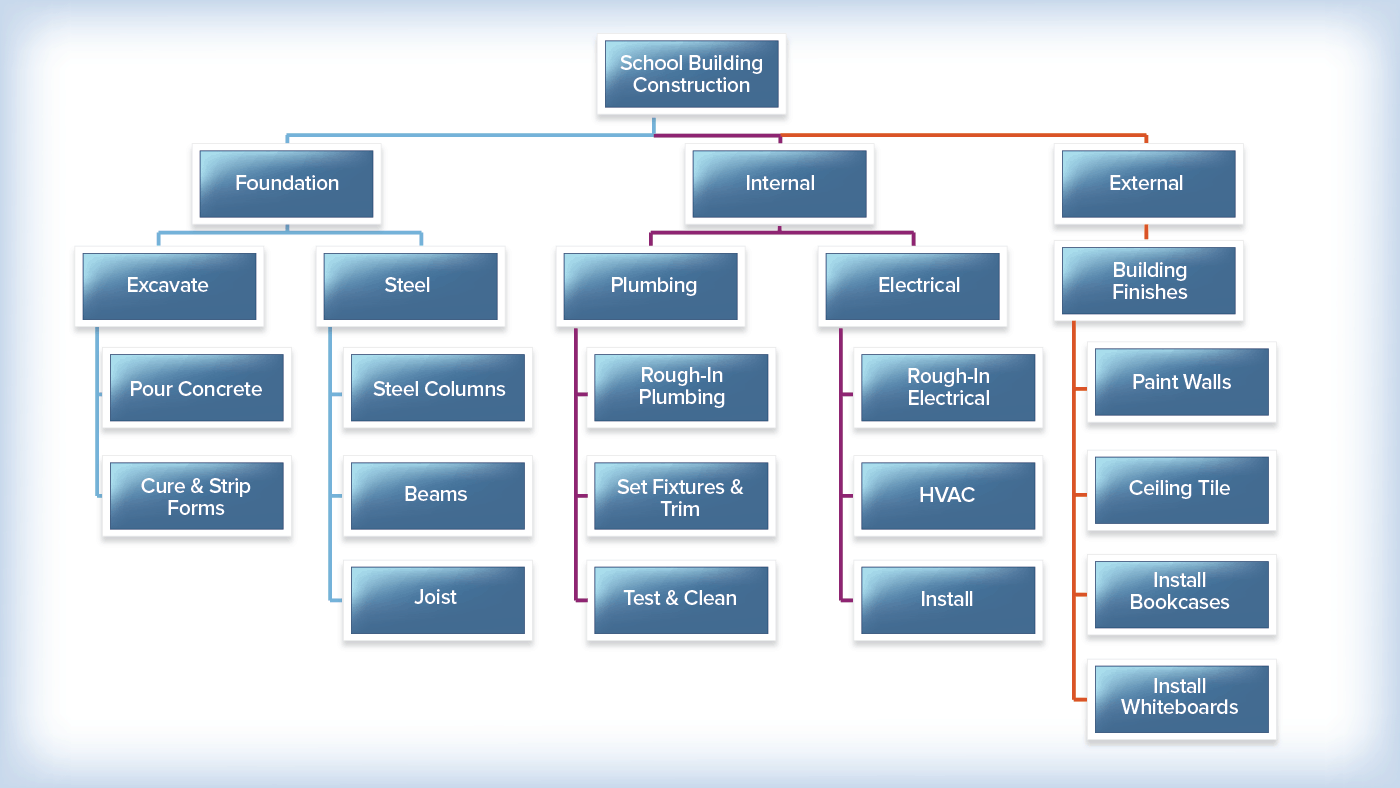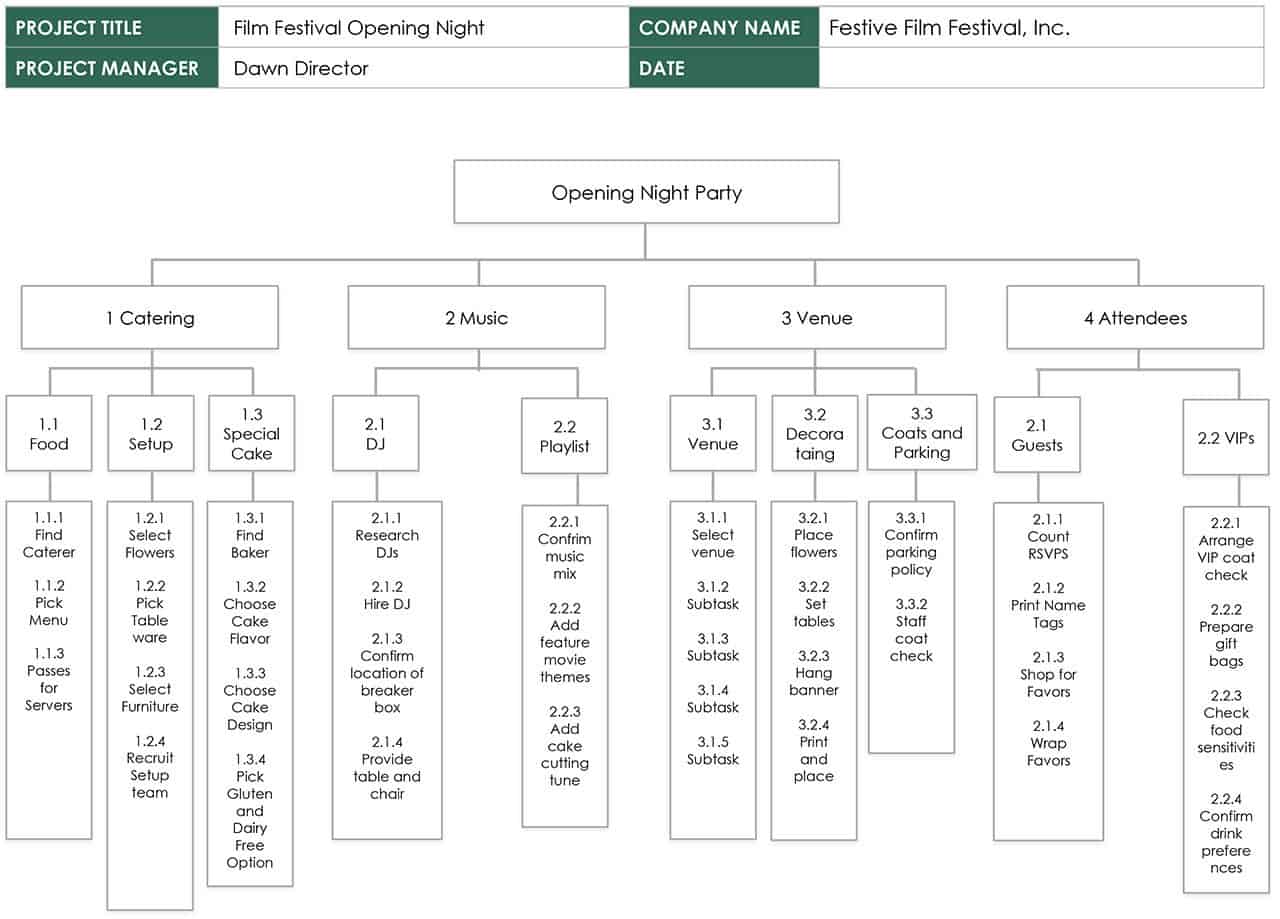What Is a Work Package?
A work package is the lowest component in a work breakdown structure (WBS), sometimes called the terminal element of a WBS. You create a work package when you decompose a deliverable into components while creating a work breakdown structure. You know you have a work package when you can’t break a deliverable down into further sub-deliverables or tangible project outcomes. A work package is a way to both understand cost and duration and easily manage those things.
“A work package is a mini-project, in a way,” says Rod Baxter, Co-Founder of Value Generation Partners, and author of the Project Management for Success Handbook. Just like a project, your work package will include all elements, such as a budget, material(s), human resources, and schedules and milestones.
For reporting purposes, a work package is usually owned by one person, and includes work that can be completed within a reporting period - however that may be defined for your organization. Break down a work package further and you end up with activities that make the mini-project.
The tasks or activities that make up a work package should flow organically as a result of decomposing the project or deliverable, but activities are generally grouped around an engineering discipline, geographical location, or structural division. A work package should be unique to the WBS. Completion of work packages can be dependencies for other work packages.
As with other concepts in project management, such as the objective and the work breakdown structure, the focus with a work packages shouldn’t be the activities that create it, but the outcome, the product, or the deliverable.
Understanding work packages can be a little complicated because terms like task, activity, and work package sometimes are used casually and interchangeably. If you are studying for the Program Management Institute’s (PMI) Program Management Professional (PMP) exam, however, distinguishing between a work package and an activity is critical.
Project Management Guide
Your one-stop shop for everything project management

Ready to get more out of your project management efforts? Visit our comprehensive project management guide for tips, best practices, and free resources to manage your work more effectively.
Work Packages’ Role in the Work Breakdown Structure
According to the PMI’s Project Management Body of Knowledge (PMBOK), a work breakdown structure is “A hierarchical decomposition of the total scope of work to be carried out by the project team to accomplish the project objectives and create the required deliverables.” So, a WBS is an outcome-focused tool for determining all deliverables and tasks required for a project. A WBS breaks down, or decomposes, all the efforts needed to complete a project. It is a visual and hierarchical representation of work, which allows you and the team to see at a glance everything that comprises a project.
The breakdown is done in at least three levels. At the lowest level is the work package. Each level and element in the WBS is numbered so that the work it represents can be easily identified and tracked through different graphical representations used in the life of the project.
An important part of the WBS is the WBS dictionary. While the WBS itself is a graphical overview of the project for quick reference, the WBS dictionary provides an in-depth background on each component in the WBS. Information such as a description of the deliverable for that component, the element number from the WBS chart, the required materials, and cost may be included. For example, if you were building a shed, metal walls might be one component. The manufacturer, size of metal sheets, and the number and name of all bolts and washers used may be included in the WBS dictionary.
The resources represented by the WBS components all roll up to total 100 percent. In other words, if you have a budget of $50,000 to build a house, and you have three components of foundation, electrical, and plumbing, the budget for those three must add up to no more than $50,000. The same is true for work hours, or materials. In this way, you can ensure that you’re not overcommitting any project resources.
When Does a Work Package Become an Activity?
Each work package is further decomposed into the activities or tasks required to complete the work package. Activities are usually stated as a verb and noun, such as “Make Lunch.” How do you know what the difference is between an activity and a work package? A work package has a specific product or outcome - or in project management-speak, a deliverable - that contributes to the project. An activity on its own does not produce a finished item or outcome that helps to fulfill the objective of the project.
Planning Packages Versus Work Packages
A work breakdown structure can contain another component: a planning package. A planning package is basically a component to be worked in the future. The scope of work or deliverable it’s meant to create is known in general, but it has not yet been assigned and scheduled. A planning package can become a work package once it is decomposed into activities.
How Does Work Packages Project Management Help You?
Breaking down your project may seem like a lot of fuss when all you and your team want to do is get on with the job, but work packages serve a real purpose. The following are some benefits of work packages:
- Scheduling and Budgeting. After you break down the work packages into activities, the activities are compiled into an activities list which allows you to create your schedule and your project budget. Rod Baxter notes that, depending on the project, you may then track key project metrics, such as Earned Value Measurement, Cost Variance, Cost Performance Index, or Key Scheduled Index.
- Easier Estimates. It’s much easier to estimate time, staffing, costs, and materials on a small scale. If you were planning a banquet, how could you determine the total cost if you didn’t know the price of things like disposable forks and dinner rolls?
- Concurrent Activity. Breaking out work packages allows you to spot opportunities for concurrent activity on a project. Multiple teams can work on different activities simultaneously.
- Reveals Interdependencies. When all the work packages are identified, you can see what tasks are dependent on others. For example, for your banquet, you probably need to send invitations and count RSVPs before you give the caterer a final headcount.
- Finite Control. Similar to estimates, it’s easier to observe and manage something when you know the details of what your managing. This knowledge can be a double-edged sword. If the project is expensive or has a high amount of risk, like with construction projects or with inexperienced teams, you might want that level of management. However, if you start managing activities and tasks, especially with an experienced team, you may actually be micromanaging.
- Show Accomplishments. A detailed schedule and work obligations recorded in a Responsibility Assignment Matrix (RAM) can also help your team to see at a glance their duties and deadlines. Successfully completing frequent activities and work packages can boost their morale.
- Stakeholder View. Depending on the project, stakeholders and upper management should be focused most on deliverables that are further up in the work breakdown structure hierarchy. However, the work package view is a good way to measure and display incremental accomplishments.
How to Create an Effective Work Package
As with other project planning tools, including the work breakdown structure, defining work packages is a team effort. As the project manager, you’ll need the insight of subject matter experts and experienced workers to determine what activities are needed to complete a work package. With that in mind, follow these steps to create effective work packages:
- Don't over decompose. To figure out an appropriate work package size, try the 8/80 rule, which states that a work package shouldn’t take less than eight hours to complete or more than 80 hours. Another tried and true measure is to consider whether the work package can be completed between reporting periods.
- Keep estimates in mind. Remember that your breakdown should help you to estimate time and money for the project.
- Assign responsibility. For reporting and management purposes, a work package should be assigned to one person.
- Make it unique. The work package should not be repeated elsewhere in the WBS - it should be one of a kind.
Examples of Work Packages and Activities
1. Building a school
2. Building a shed
3. Organizing a big party
Easily Manage Work Packages with Smartsheet
Empower your people to go above and beyond with a flexible platform designed to match the needs of your team — and adapt as those needs change.
The Smartsheet platform makes it easy to plan, capture, manage, and report on work from anywhere, helping your team be more effective and get more done. Report on key metrics and get real-time visibility into work as it happens with roll-up reports, dashboards, and automated workflows built to keep your team connected and informed.
When teams have clarity into the work getting done, there’s no telling how much more they can accomplish in the same amount of time. Try Smartsheet for free, today.



